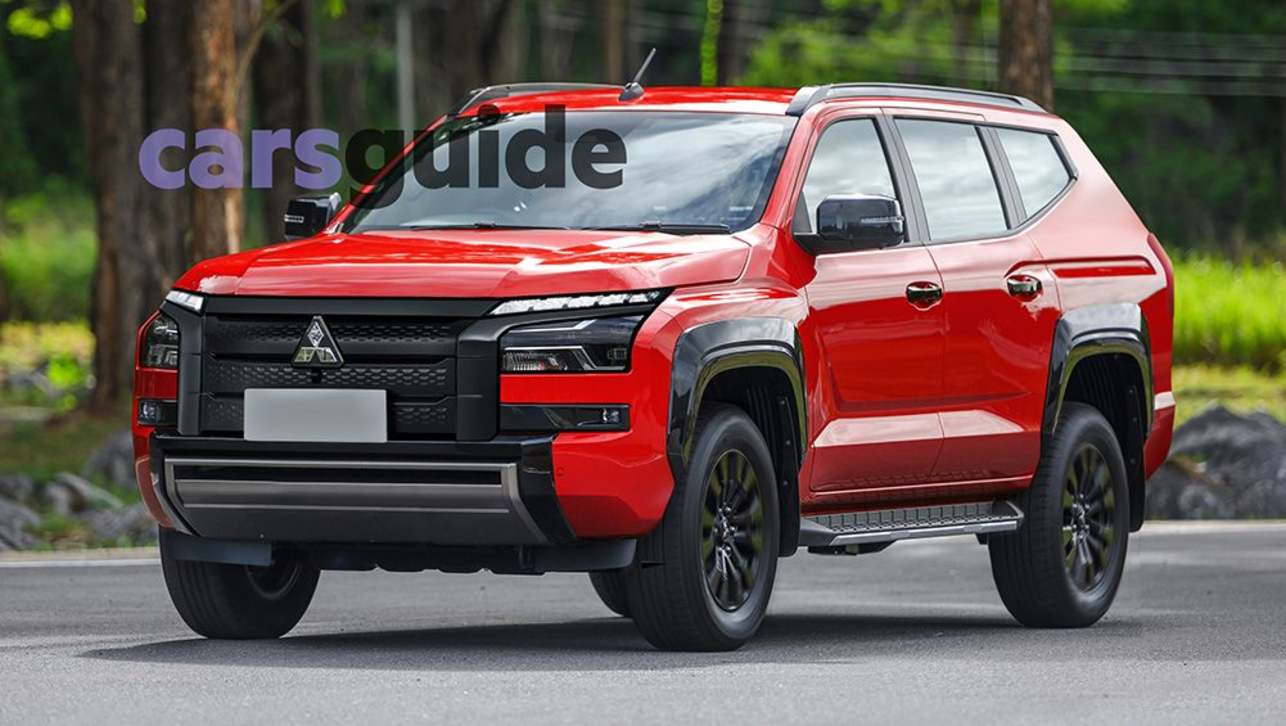Mitsubishi's Pajero Sport is a good honest vehicle without ever being over the top.
It's ticked along nicely in terms of sales and popularity, building a solid fanbase for itself along the way with families (as a daily driver) and adventure travellers (as a reliable touring vehicle).
But it's well overdue for a new-gen iteration because the current Pajero Sport has felt old for quite some time. It's also lost any past value equation appeal it may have had as prices continue to rise.
The unveiling of the new Triton, expected here early next year, provides a decent hint at what we can expect in the next Pajero Sport, expected here in 2025.
The sixth-generation Triton, unveiled in July, has a twin-turbo diesel engine (replacing the current Triton's single-turbo engine and producing more power), new interior design and a wider, stronger ladder-frame chassis.
So, can the next-gen Pajero Sport, which is based on the Triton, take down the likes of the Ford Everest? There are a few factors in its favour and one against.

Twin-turbo engine, new platform, refreshed cabin, towing capacity increase
The upcoming Triton has been revealed to still have a 2.4-litre four-cylinder diesel engine, but it now has a twin-turbo and it produces more power – 150kW at 1500rpm over the current engine's 133kW at 3500rpm. The new Triton will have a maximum tuned torque figure of 470Nm; the outgoing Triton produces 430Nm.
The upcoming Triton will keep the six-speed automatic transmission.
It's safe to expect the new Pajero Sport will have the same set-up, albeit matched to an eight-speed auto, as in the current generation.
It'll be interesting to see how that twin-turbo powertrain performs after sustained periods of high-stress workloads.
.jpg)
The upcoming Triton is 15mm longer (5320mm, with a longer wheelbase 3130mm) and 50mm wider (1850mm) than the current generation model. So, that should translate into more space inside the cabin for driver, passenger, gear and your dogs.
However, a bigger vehicle means a heavier vehicle: outgoing Triton is about 2000kg, incoming Triton will likely tip the scales around the 2200kg mark.
This is all atop a newly developed ladder-frame chassis that's claimed to have a 40 per cent increase in bending rigidity and a 60 per cent increase in torsional rigidity over the current vehicle.
Again, the next-generation Triton-based Pajero Sport will be bigger and heavier, for better or worse.
Tying in with its size increase, the upcoming Triton will get a towing capacity boost from 3100kg to 3500kg, bringing it into line with its rivals.
.jpg)
A new, bigger, heftier Pajero Sport will likely get the same increase.
The 2024 Triton was revealed to have quite the refreshed look inside the cabin, as well as the introduction of a more modern multimedia system and the like, as well as more driver-assist safety tech (including AEB with pedestrian and cyclist detection as standard across the range), bringing the ute closer to contemporary standards.
The same will no doubt hold true for the Pajero Sport.
All of these factors – if carried over – will help to bring the Pajero Sport more into line with top-notch competitors such as the Ford Everest.
Mitsubishi's Super Select II 4WD system
A major point of difference between the Triton and its rivals has always been Mitsubishi's impressive Super Select II 4WD system.
Same goes for the Pajero Sport.
Good news is Mitsubishi will keep that set-up onboard the Triton – and they'd have to be foolish to delete it from the upcoming Pajero Sport.
Super Select II offers a range of drive modes: 2H (two-wheel drive, rear), 4H (4x4 but with the centre diff unlocked, enabling full-time 4WD, which, in this case, is safe to use at high speed on bitumen), 4HLC (4x4 with locked centre diff; off-road driving at 30km/h or so) and 4LLC (4x4 with locked centre diff and crawler gears engaged; only for low-speed 4WDing (below 30km/h).
.jpg)
The driver is able to safely switch between 2WD (2H) and 4WD (4H, 4HLc) at speeds up to 100km/h.
Super Select II works well and offers plenty of flexibility in most circumstances, including everyday traction-compromised situations (such as wet bitumen) with 4H engaged (but centre diff unlocked), and on more challenging off-road obstacles (such as moderate-to-difficult rock steps) in 4LLC (4X4 with locked centre diff).
Driven sensibly and with tyre pressures adjusted to suit the terrain, the current Pajero Sport can handle a lot of 4WD-only scenarios – and the next-gen will surely improve on that performance.
Price rise
In the past Mitsubishi's Triton and Pajero Sport were considered good value-for-money buys. But in recent years price increases have tipped them out of value-equation favour and pushed Chinese-made vehicles into focus.
The current top-shelf Triton, the GSR 4x4 dual-cab, has an asking price of $56,940 (before on-road costs) – and that's considerably cheaper than its Isuzu D-Max, Toyota HiLux and Ford Ranger rivals.
.jpg)
However, price increases for the new-generation Triton are guaranteed, of course, but price hikes that draw it ever closer to those chief competitors will cause significant damage to any claim Mitsubishi has to the Triton still hanging on as a viable value-equation buy.
And by extension that applies to its Triton-based stablemate. A current-generation top-spec seven-seat Pajero Sport in GSR trim has a pricetag of $62,440.
Mitsubishi officials have said that the next-gen Triton will be priced higher than the current vehicle but, at time of writing, prices had not yet been announced.
What I reckon
The Mitsubishi Pajero Sport is a solid, no-nonsense 4WD wagon that, in its current form, is pretty bloody good, without ever actually being great – but that's fine with me and a lot of other people.
It will certainly benefit from an uprated engine, more driver-assist safety tech and an increase in towing capacity – among many other things.
But can it take down the likes of the Ford Everest? Well, it's highly unlikely, but a new Pajero Sport will at least rattle its rivals' cages and put big smiles on the faces of Pajero fans everywhere.




.jpg)
.jpg)







.jpg)
.jpg)
.jpg)




.jpg)
.jpg)
.jpg)
.jpg)
.jpg)
.jpg)
.jpg)


.jpg)

Comments